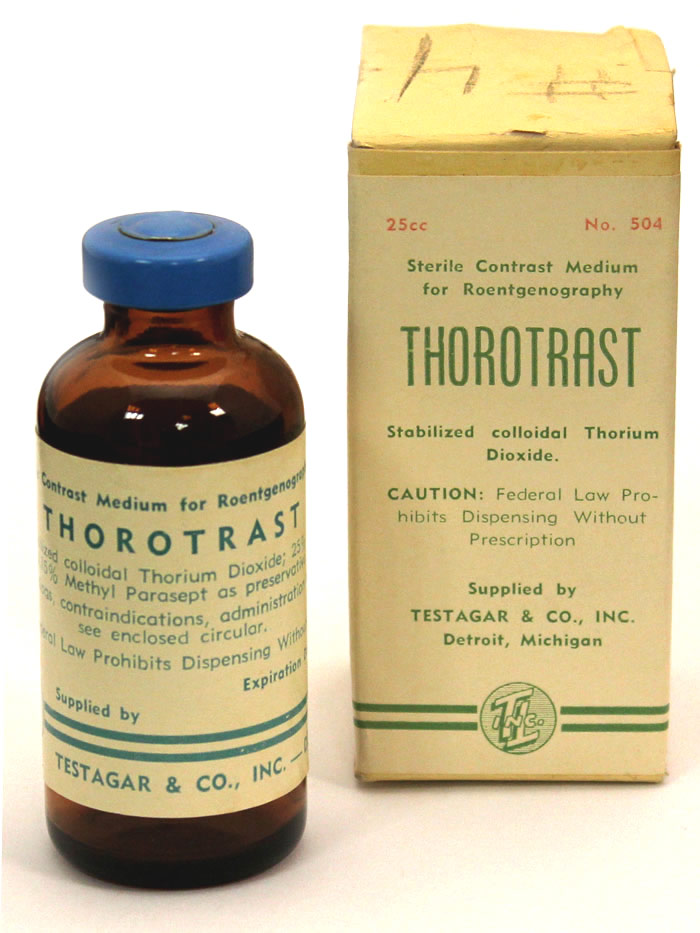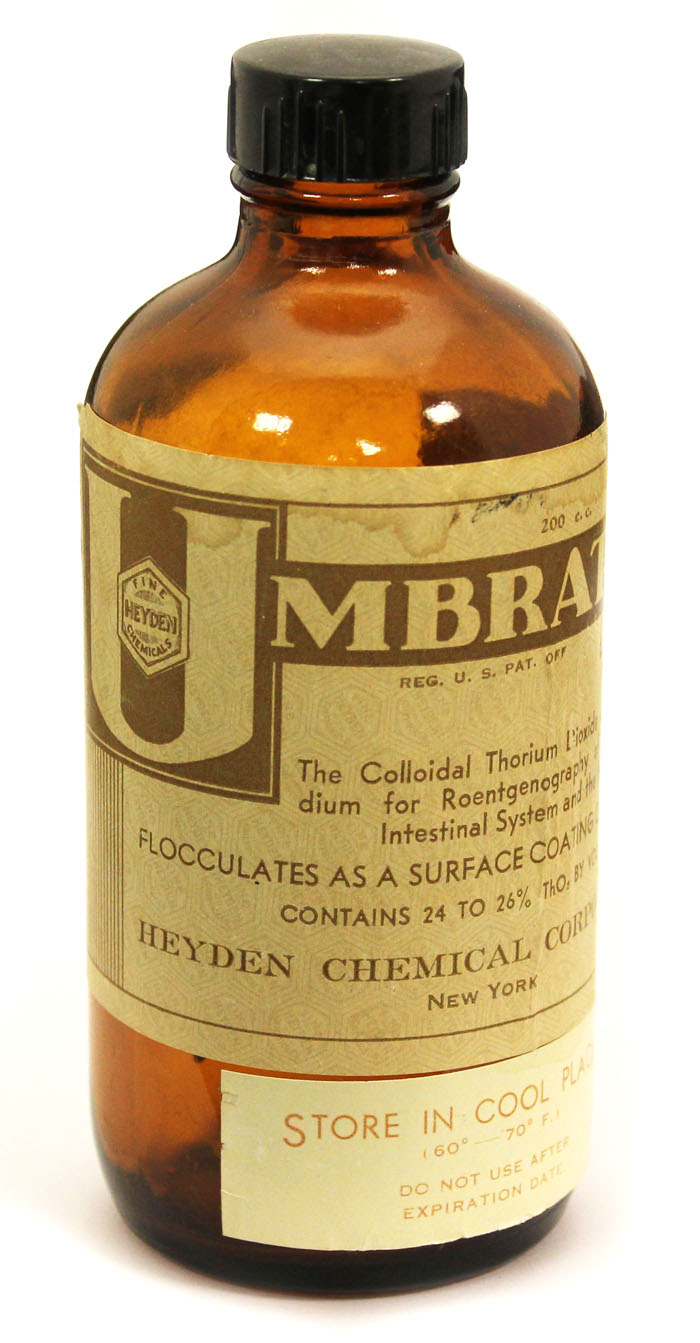Thorotrast and Umbrathor (1950s)

To visualize blood vessels in an X-ray, it is necessary to inject a contrast agent into the blood. Otherwise, the X-ray beam passes through the vessels and no image is produced. Such agents are also necessary to visualize cavities in the body (e.g., the gastrointestinal tract and the sinuses). Contrast agents have high atomic (Z) numbers in order to increase their effectiveness for stopping the X-rays. Today, compounds of iodine are used as contrast agents. However, between 1930 and 1955, contrast agents containing thorium dioxide were popular—thorium has a very high atomic number (Z=90) and it produced excellent images. Two examples of these thorium containing agents were Thorotrast which was produced by Testagar and Company, and Umbrathor produced by the Heyden Chemical Company.
Unfortunately, thorium is radioactive and it tends to remain in the body long after injection. In particular, it accumulates in the liver, spleen, and bone marrow. Dose rates to these respective tissues have been estimated to be approximately 25, 70, and 10 rads per year for individuals treated with Thorotrast.
Between 1930 and 1955 several million individuals were injected with Thorotrast. As expected, a large number individuals developed cancer, usually 20-30 years following the injection.

Umbrathor was similar to Thorotrast except that it was ingested and used for the visualization of the gastrointestinal tract. The main advantage of Umbrathor over barium-containing contrast agents was that it remained in an aqueous solution. This meant that the images were more consistent than those obtained with barium. It was also less likely to cause blockages. Since Umbrathor was not assimilated into the body to any significant extent, the resulting doses were much smaller than those associated with Thorotrast.
The expiration dates marked on the bottles were May 1953 for the Umbrathor and September 1962 for the Thorotrast.
Donated by Donna Sutherland of the California Radiologic Health Department and Chris Klimczak at Argonne National Laboratory.
Sizes: Thorotrast 25 cc, 3" high; Umbrathor 200 cc, 5.5" high
Reference
John Abbatt. History of the Use and Toxicity of Thorotrast. Environmental Research 18: 6-12; 1979.
